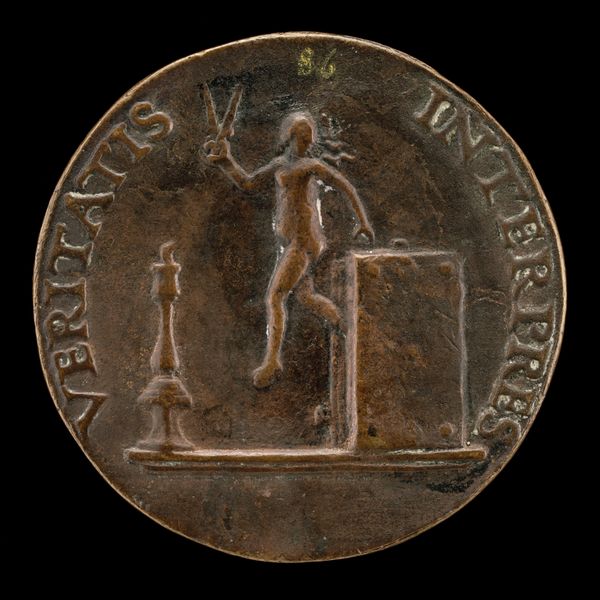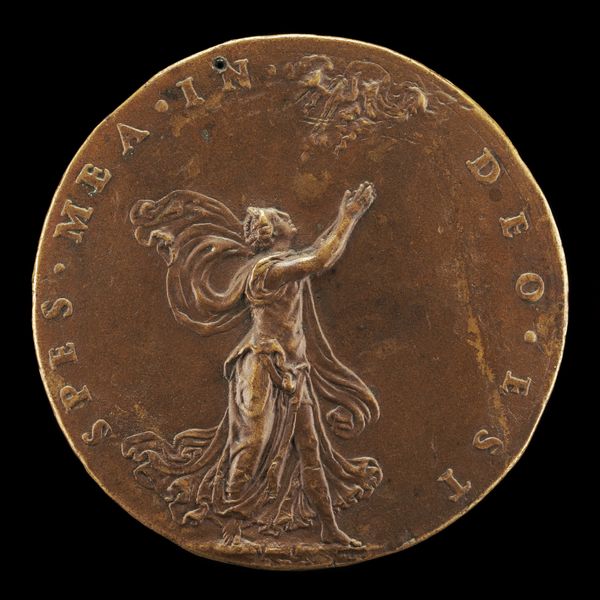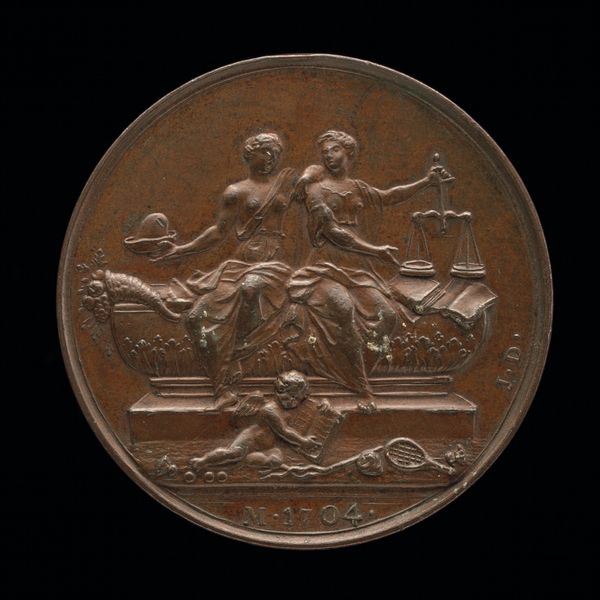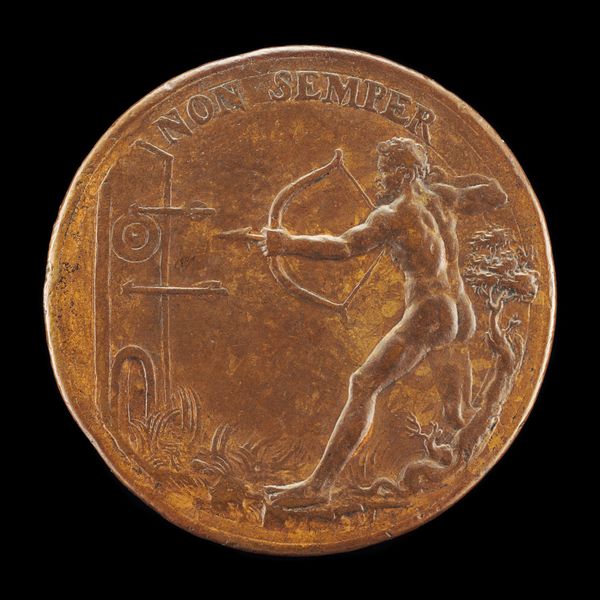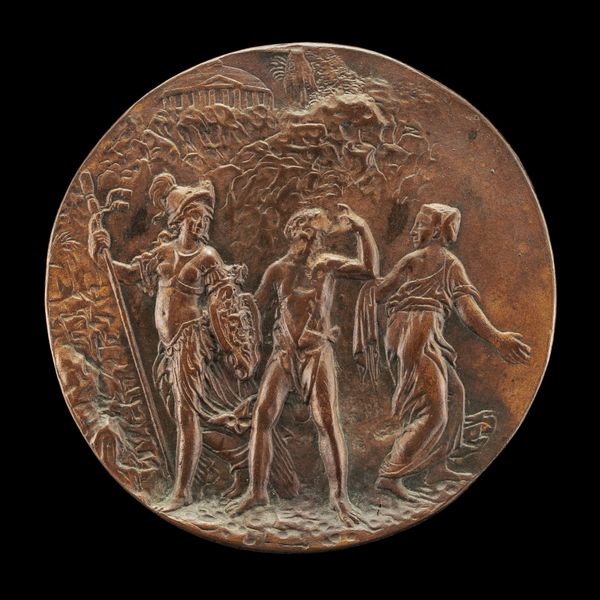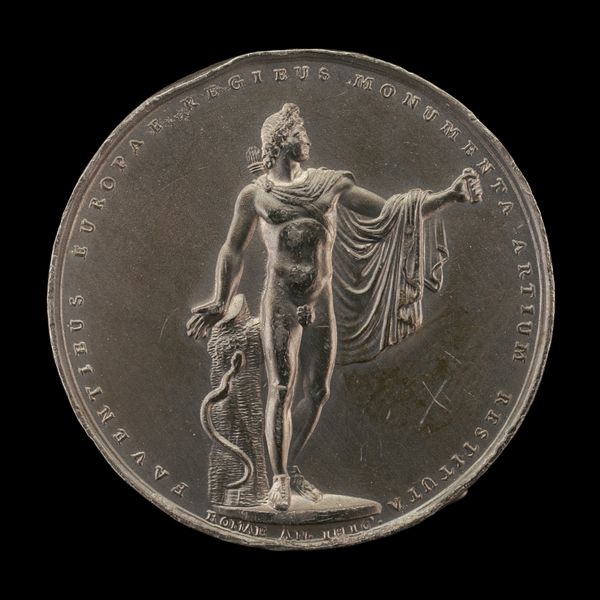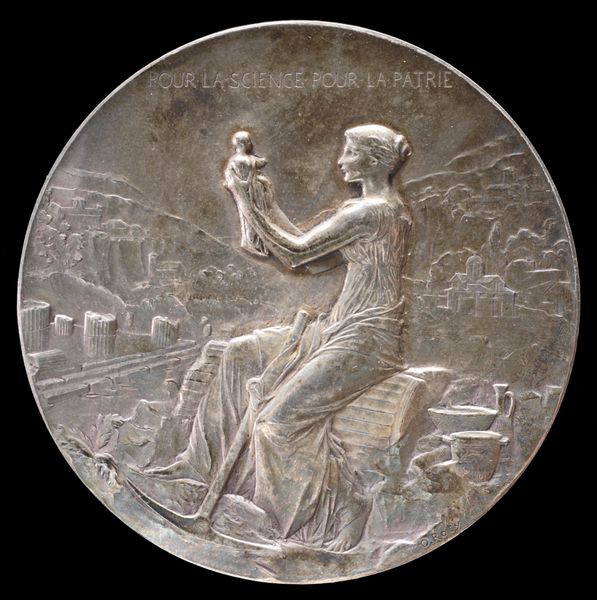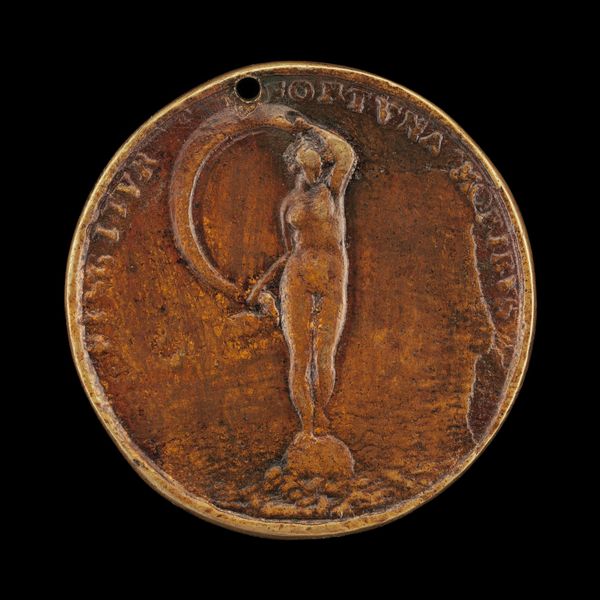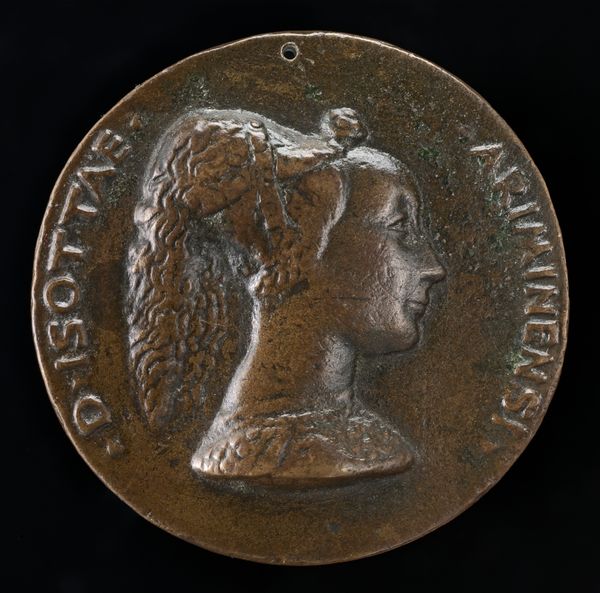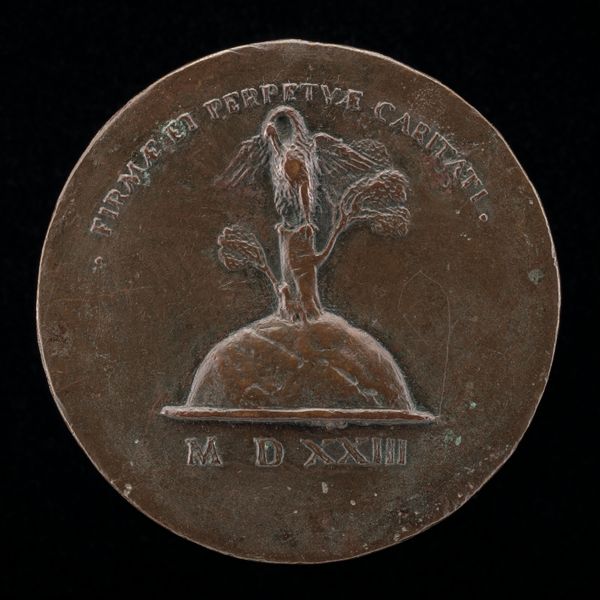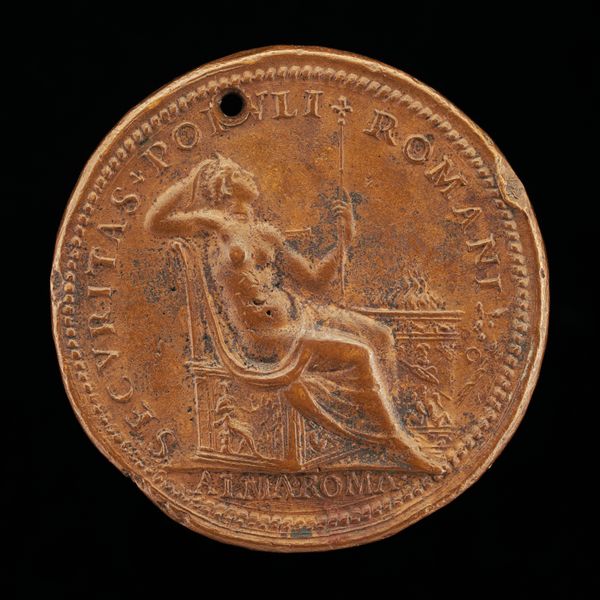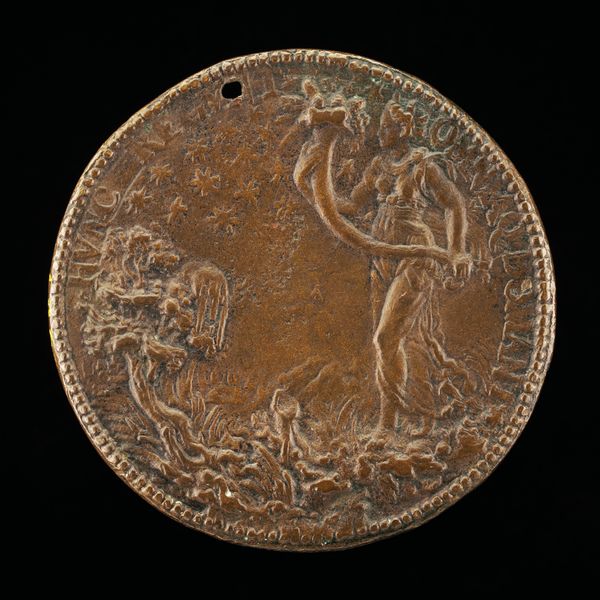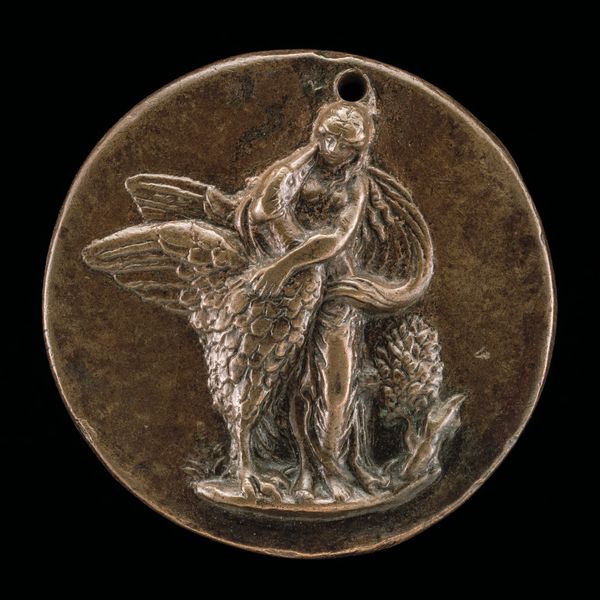![Standing Figure of Urania [reverse] by Maffeo Olivieri](/_next/image?url=https%3A%2F%2Fd2w8kbdekdi1gv.cloudfront.net%2FeyJidWNrZXQiOiAiYXJ0ZXJhLWltYWdlcy1idWNrZXQiLCAia2V5IjogImFydHdvcmtzLzc1ZDVkMzcyLWI5OTAtNGUxNi1hZGE5LTI0ZDIzOTBkODFkZi83NWQ1ZDM3Mi1iOTkwLTRlMTYtYWRhOS0yNGQyMzkwZDgxZGZfZnVsbC5qcGciLCAiZWRpdHMiOiB7InJlc2l6ZSI6IHsid2lkdGgiOiAxOTIwLCAiaGVpZ2h0IjogMTkyMCwgImZpdCI6ICJpbnNpZGUifX19&w=3840&q=75)
relief, bronze, sculpture
#
medal
#
sculpture
#
relief
#
bronze
#
figuration
#
11_renaissance
#
sculpture
#
italian-renaissance
#
nude
Dimensions: overall (diameter): 3.21 cm (1 1/4 in.) gross weight: 15.56 gr (0.034 lb.) axis: 6:00
Copyright: National Gallery of Art: CC0 1.0
Curator: We're looking at a bronze relief sculpture by Maffeo Olivieri, crafted around 1519. It's called "Standing Figure of Urania [reverse]". Editor: Wow, she looks… troubled? Almost like she's shielding her eyes from something unpleasant, despite being, well, completely nude. Is she embarrassed by the modern gaze on a Renaissance body, perhaps? Curator: The pose does seem ambiguous. It could be interpreted as modesty, but also defiance. During the Renaissance, depictions of the female nude often served allegorical or mythological purposes. Urania was the Greek Muse of astronomy, and this sculpture likely aimed to symbolize divine inspiration and intellectual pursuit, linking beauty with higher knowledge. Editor: Higher knowledge, huh? All I'm seeing is a figure that’s a bit isolated on this circular field. Like she’s just… there. You know? Without a whole lot of fanfare, I almost feel bad for her being so exposed. The Renaissance really knew how to put the 'human' in humanism, didn't they, warts and all. The proportions are what feel raw to me—a person rather than a flawless symbol. Curator: That's an astute observation. Consider how Olivieri might be engaging with humanist ideals here. He is not simply idealizing the figure of Urania, but also capturing a sense of vulnerability. The reversed inscription around the edge could indicate intentional ambiguity, disrupting traditional interpretations of female representation within Renaissance art. Perhaps an appeal to a specific educated and intellectual milieu. Editor: Right! It's like he’s offering us an image with a twist. Like a puzzle. We are supposed to rethink not just her place in art history but maybe our expectations. Curator: Exactly. And, thinking more broadly, perhaps we can also connect this figure of Urania to current discussions about visibility, representation, and the enduring power dynamics embedded in artistic conventions. Editor: Okay, so maybe it is that embarrassed thing. Thinking about the piece like that adds a fascinating weight. Well, now I feel bad for saying the part of warts and all before because now it feels completely different now, it is as if I got a part of a complex intellectual puzzle with this medal. Curator: I find that interplay of history and our present interpretations truly valuable in considering pieces like this one.
Comments
No comments
Be the first to comment and join the conversation on the ultimate creative platform.
